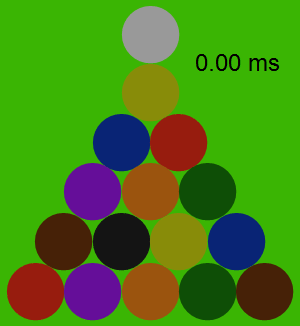Nobody has proved this? I did not read all the posts here, but I did read the Wikipedia link provided by Paradigm Shifter.
EDIT: The Wikipedia link does specify a positive integer. My mathematical notation is rusty, and typing out a proof in mathematical notation on a forum like this is a bit awkward.
Second EDIT:
It looks like in fact we eventually do get to a number divisible by 4.
If we express an odd number as A*2^N-1, (where A is an odd number and N is an integer greater than zero) then:
a. After (2N-1) iterations, we will arrive at a number divisible by 4.
b. This number divisible by 4 will be 2*(A*3^N-1).
Nobody has proved you'll always reach 1.
Proving you always reach a number divisible by 4 is easier, and you have come up with the proof I was hinting at with:
I think it's merely something interesting that I came up with the first time I met this series. But I couldn't see how it helped me to prove the series. I'll drop an even bigger hint.
Any odd number can be written as (p.2^n) - 1, where p is odd. Correct? What happens when you iterate from that?





 What I meant was that, when you see that formula, you can either believe that 2=1, or you can believe that a-b=0. Since 2=1 isn't true, the only solution is that a-b=0.
What I meant was that, when you see that formula, you can either believe that 2=1, or you can believe that a-b=0. Since 2=1 isn't true, the only solution is that a-b=0.